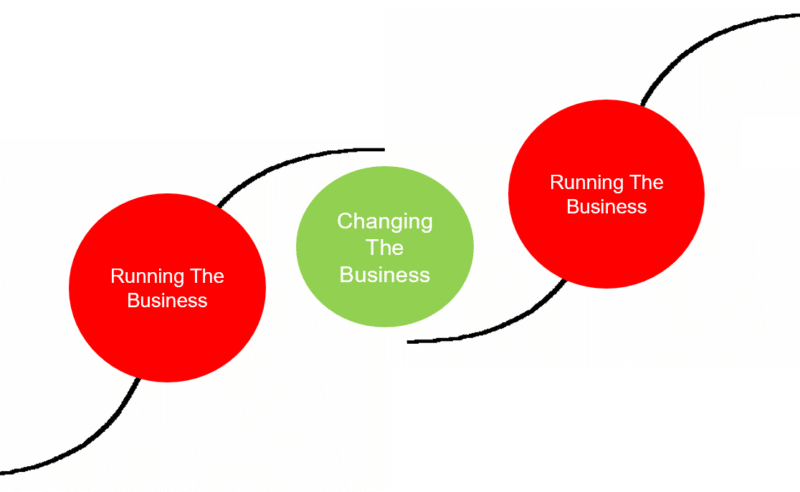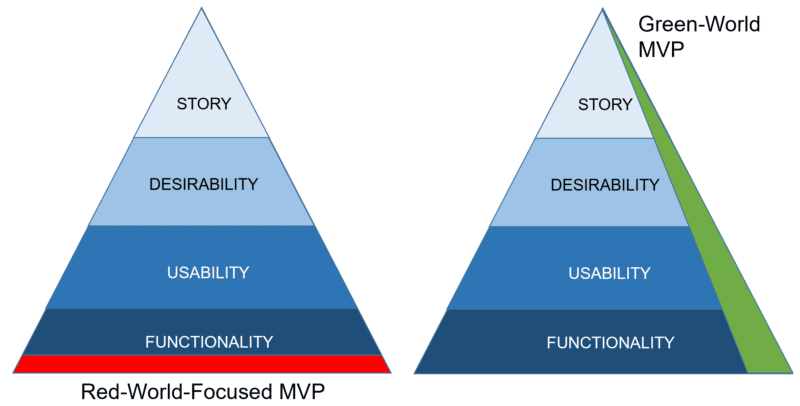
Money is the fuel that keeps organisations going. I used to say that Red World was the one that knew how to make money. That’s true, but it forgets that getting money from customers in return for providing them with useful products and services isn’t the only source of money. Red World exists to generate repeatable and reliable sources of revenue that allow the organisation to keep going. Part of this ‘keep going’ revenue involves an amount of money to support the work of Green World to create the new products and services that will eventually have to replace the current ones. Green World in this context is typically seen as a ‘drain’ on resources. Particularly by all those people in Red World tasked with generating the cash that allows Green World to exist.
What often gets missed in this Red-today/Green-tomorrow dynamic though is that many members of Green World have also learned to become good at finding their own sources of fuel. Usually in the form of either government-supported grant schemes or, more commonly, investors. Attracting money from these Green ‘customers’ is a very different job to attracting money from Red World’s already-made customer base.
One of the biggest differences is between tangible and intangible. Red World selling, while it will inevitably involve intangible elements (‘when all else is equal, we buy from our friends; when all else is unequal, we still buy from our friends’), is able to focus on the highly measurable, eminently quantifiable and very tangible attributes of an already established product or service.
Green World selling, on the other hand, is almost exclusively about selling the intangibles. Simply because little to none of the tangible stuff exists yet. Green selling is about selling customers dreams of the future. Which, as you might expect, is about being creative and, more specifically, about being able to tell compelling stories.
Red-selling is built around data and facts, supply and demand, helping customers to get their pre-existing jobs done and demonstrating that the benefits and attributes of our solution are better than those of our competitors. The Who, What, When, Where, How and Why’s have all been worked out, and it is about using the same ‘script’ over and over again, with periodic carrot-or-stick variations depending on whether it looks like we’re going to hit our sales targets this quarter or not.
Green-selling starts from a point where that script doesn’t exist yet. None of the 5Ws or the H have been worked out. It is therefore about conducting as many experiments as we can, saying things in different and hopefully eventually better ways to as many prospective future customers as we can muster. All the time walking a cruel tightrope walk that reminds us that every time we fail to convince one of those prospective customers, we are eating away at what may already be a pretty small pool of brave, early-adopting dreamers. In so many words, every new product or service offering that an organisation is hoping to take to market needs to be accompanied by a corresponding amount of Green Sales ‘business innovation’ to accompany the Green Engineering technical innovation work that went into creating the new thing.
I’m mentioning this now because one of the things we’ve been noticing in this strange between-s-curves time in society – a time when most industries should be realising this is also the perfect time for them to be innovating – is that the most important attribute of just about any innovation attempt right now is to be quick. Which means that the business innovation task of working out the stories that will sell the future dreams to prospective customers are largely going to have to happen in parallel with the product/service development activities. In a normal market (if such a thing exists) the smart innovator ought not to contemplate selling new products that are still only halfway along the Technology Readiness Level scale. In today’s turbulence, it is highly likely that the braves souls that work out how to sell R&D outputs at TRL3 or 4 or 5, in parallel with the ongoing technical development work that will be the winners.
Here we perhaps find ourselves contemplating the double-edged sword that is the Minimum Viable Product. Another of those business buzzword ideas that is likely to go out of fashion before anyone works out what it was supposed to mean. My theory is that the business world finds itself talking about MVPs because it sounds like something that Red World might find acceptable. i.e. it is a Green World conception that has rapidly found itself corrupted in order to pander to business leaders that usually have no conception that a Green World even exists. Consequently, as with most important ideas, it rapidly descends into lowest common denominator territory. So the Red World focused version of a MVP focuses on the main elements of functionality. As opposed to the original intent of having MVPs that also helped designers to gain the earliest possible opportunity to explore usability and desirability parameters. And, now that it has become important to think about having a Green Sales capability as a business imperative, to also be able to explore the higher level story-related characteristics of a new product or service. Something like this:

Thinking through this kind of Green-MVP strategy is something that I believe the best Green World inhabitants have always been able to do. I’m thinking specifically about those people that are able to simultaneously pitch their dreams to investors and sponsors and demonstrate that they know how to safely and reliably transition from the dream to money-making (Red World) reality.
